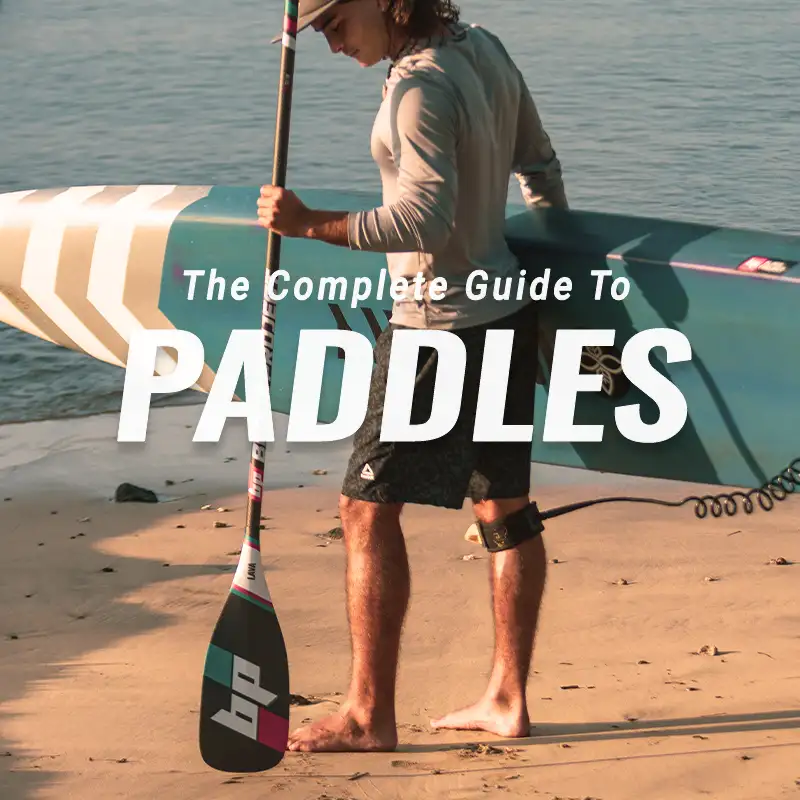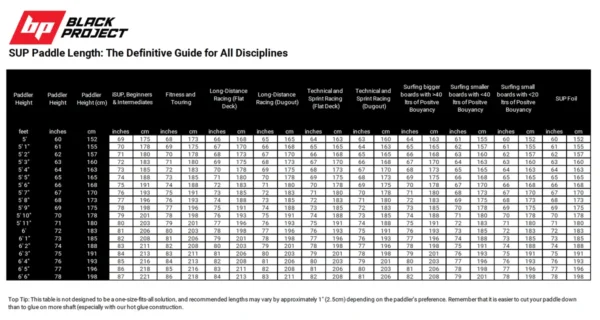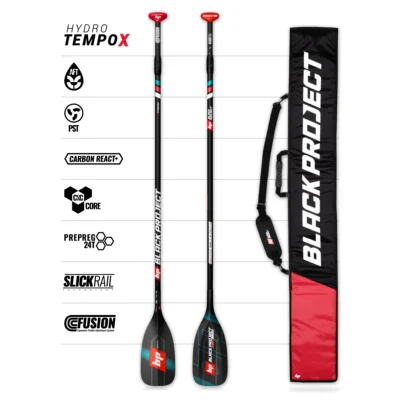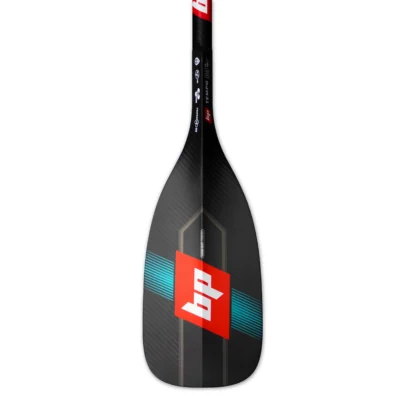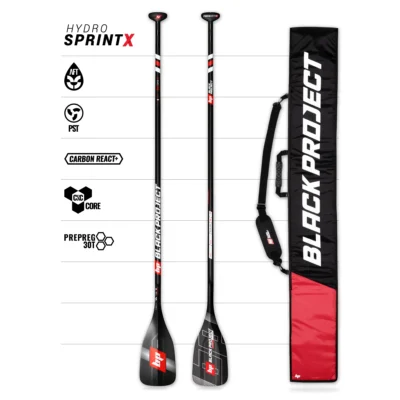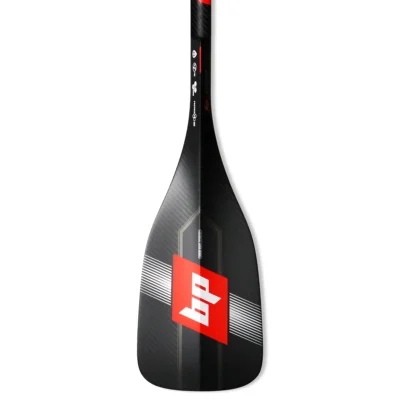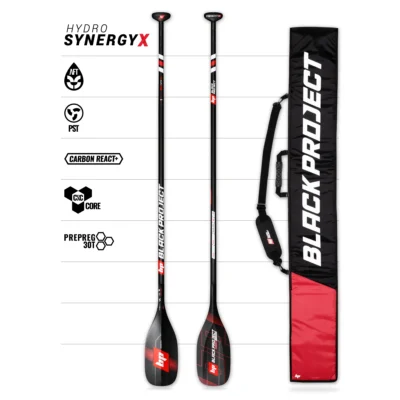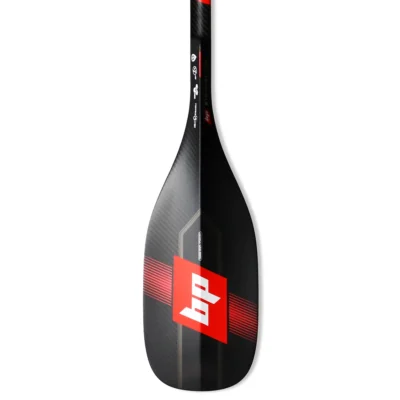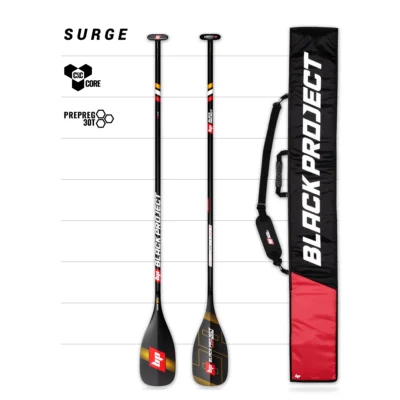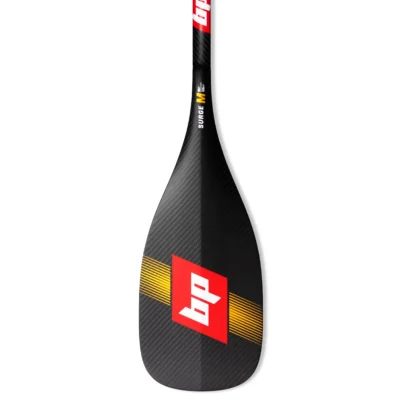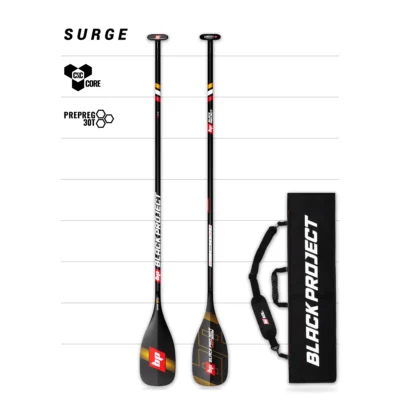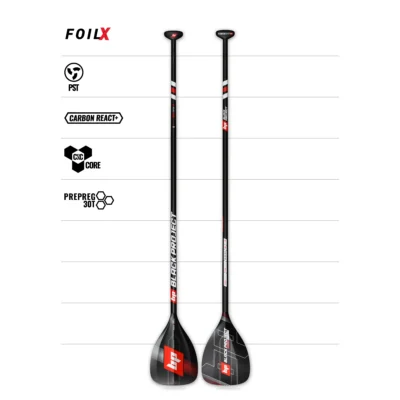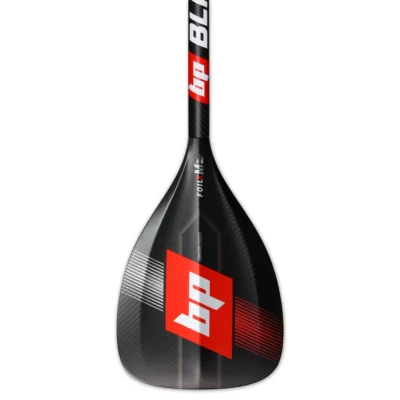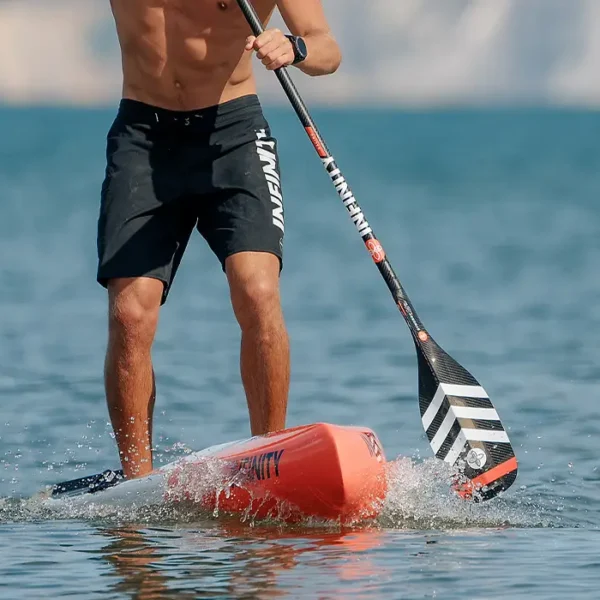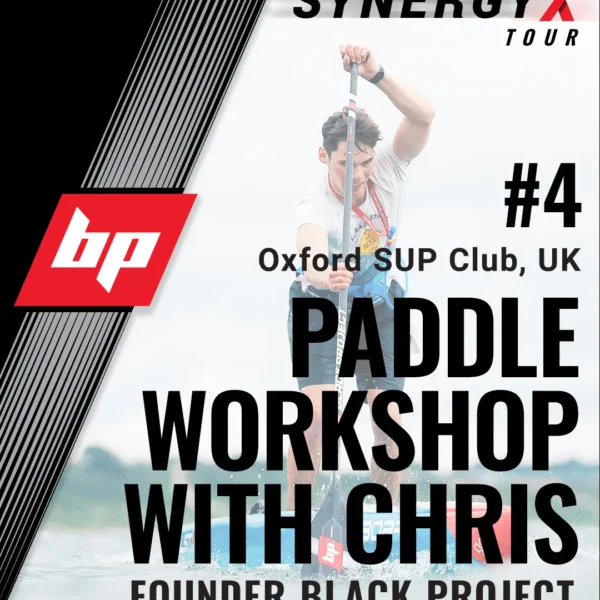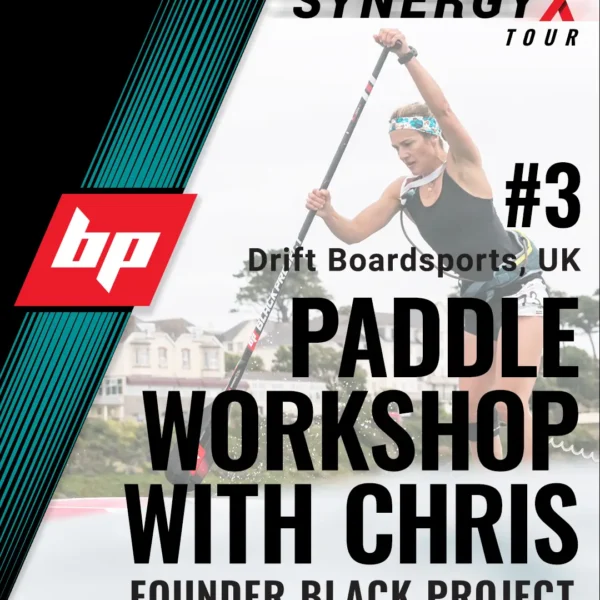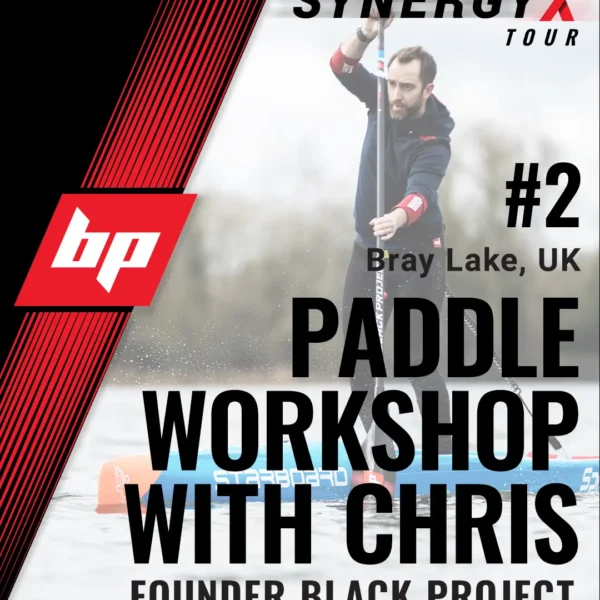
SUP Paddle Length Guide – Find Your Ideal Paddle Size
Step #5 – Determining The Correct Paddle Length
This SUP Paddle Length Guide is here to help you get it right—because paddle length is one of the most critical factors in stand-up paddling performance. The right paddle length ensures proper technique, efficiency, and comfort while reducing strain on your body. Your height, board type, and paddling discipline all influence the best length for you. Whether you need a longer paddle for racing or a shorter one for surfing, this step will break down everything you need to know so you can confidently select the perfect paddle length for your needs.
Understanding the Key Factors in SUP Paddle Length
There is no one-size-fits-all answer when it comes to SUP paddle length. The best length for you depends on a combination of factors, including your height, board type, and paddling style. A paddle that’s too long can cause unnecessary strain, while a paddle that’s too short may reduce efficiency and power. The paddle length guides below provide recommended paddle lengths based on paddling discipline, paddler height, and board type to help you find the best fit.
Relax—Don’t Stress About SUP Paddle Length
Many paddlers adjust their paddle length over time as their technique and preferences develop. That’s why we recommend starting slightly longer. Thanks to our hot glue assembly method, it’s easy to shorten your paddle later—giving you the flexibility to dial in your ideal SUP paddle length as your paddling evolves.
DOWNLOAD: SUP Paddle Length: The Definitive Guide for All Disciplines (.PDF)
Top Tip: This table is not designed to be a one-size-fits-all solution, and recommended lengths may vary by approximately 1″ (2.5cm) depending on the paddler’s preference. Remember that it is easier to cut your paddle down than to glue on more shaft (especially with our hot glue construction.
Top Tip: Use Hot Glue for Easy Length Adjustments
Our extra-strength hot glue makes it easy to fine-tune your 1-Piece (fixed length) paddle length over time. It allows you to remove, adjust, and reattach the handle (or shaft) without damage—perfect for dialing in the perfect fit as your needs evolve.
How do I know if my paddle is too long?
If your paddle is too long, you may notice some or all of these signs:
- Shoulder Pain = Caused by overreaching during each stroke.
- Awkward Paddling Feel = Movements feel less natural or forced.
- Hard to Switch Sides = Longer length makes transitions less fluid.
- Over-Extension in Stroke = Excess length leads to strain during the power phase.
How Do I Know If My Paddle Is Too Short?
If you paddle is too short you may notice some or all of these symptoms:
- Lower Back Pain = Overreaching or poor posture to compensate for lack of length.
- Loss of Power = Shorter reach limits stroke efficiency and drive.
- Incomplete Blade Entry = Blade doesn’t fully submerge, reducing effectiveness.
- Reduced Stability = A shortened stance may affect balance and control.
How Your SUP Discipline Influences Paddle Length
Many paddlers use one paddle across different disciplines, but it’s important to prioritize your primary use. Whether you’re racing, touring, surfing, or foiling, each discipline places different demands on paddle length.
SUP Racing and Touring Paddle Length Guide
This paddle length chart is designed to help you find the ideal SUP paddle size for your specific discipline—whether you’re sprint racing, paddling long-distance, touring, or enjoying flatwater sessions. While these are reliable guidelines, paddle length can vary by about 1″ (2.5 cm) depending on your height, stroke style, and board setup.
Shorter paddles are typically better for sprinting and high-cadence paddling, while longer paddles provide greater comfort and efficiency for endurance racing and touring.
Since it’s easier to shorten a paddle than to add length, we recommend starting slightly longer—especially with our hot glue construction, which allows for easy length adjustments as your paddling needs evolve.
Height (ft / cm / in) | Fitness & Touring | Racing (Flat Deck) | Racing (Dugout) | Tech & Sprint Racing |
|---|---|---|---|---|
| 5′ / 60 / 152 | 68 / 173 | 66 / 168 | 65 / 165 | 64 / 163 |
| 5′ 1″ / 61 / 155 | 69 / 175 | 67 / 170 | 66 / 168 | 65 / 165 |
| 5′ 2″ / 62 / 157 | 70 / 178 | 68 / 173 | 67 / 170 | 66 / 168 |
| 5′ 3″ / 63 / 160 | 71 / 180 | 69 / 175 | 68 / 173 | 67 / 170 |
| 5′ 4″ / 64 / 163 | 72 / 183 | 70 / 178 | 69 / 175 | 68 / 173 |
| 5′ 5″ / 65 / 165 | 73 / 185 | 71 / 180 | 70 / 178 | 69 / 175 |
| 5′ 6″ / 66 / 168 | 74 / 188 | 72 / 183 | 71 / 180 | 70 / 178 |
| 5′ 7″ / 67 / 170 | 75 / 191 | 73 / 185 | 72 / 183 | 71 / 180 |
| 5′ 8″ / 68 / 173 | 76 / 193 | 74 / 188 | 73 / 185 | 72 / 183 |
| 5′ 9″ / 69 / 175 | 77 / 196 | 75 / 191 | 74 / 188 | 73 / 185 |
| 5′ 10″ / 70 / 178 | 78 / 198 | 76 / 193 | 75 / 191 | 74 / 188 |
| 5′ 11″ / 71 / 180 | 79 / 201 | 77 / 196 | 76 / 193 | 75 / 191 |
| 6′ / 72 / 183 | 80 / 203 | 78 / 198 | 77 / 196 | 76 / 193 |
| 6′ 1″ / 73 / 185 | 81 / 206 | 79 / 201 | 78 / 198 | 77 / 196 |
| 6′ 2″ / 74 / 188 | 82 / 208 | 80 / 203 | 79 / 201 | 78 / 198 |
| 6′ 3″ / 75 / 191 | 83 / 211 | 81 / 206 | 80 / 203 | 79 / 201 |
| 6′ 4″ / 76 / 193 | 84 / 213 | 82 / 208 | 81 / 206 | 80 / 203 |
| 6′ 5″ / 77 / 196 | 85 / 216 | 83 / 211 | 82 / 208 | 81 / 206 |
| 6′ 6″ / 78 / 198 | 86 / 218 | 84 / 213 | 83 / 211 | 81 / 206 |
Shop SUP Race and Touring Paddles
-
- 2024-5, SUP Paddles, SUP Race Paddles, SUP Racing, SUP Recreation
Hydro TempoX 2-Piece Adj.
-
$525.004.95 out of 5(23)
- Rated 4.95 out of 5
- View Product
Hydro TempoX 2-Piece Adj.
$525.004.95 out of 5(23) -
- SUP Paddles, SUP Race Paddles, SUP Racing
Hydro SprintX
-
$650.005.00 out of 5(26)
- Rated 5.00 out of 5
- View Product
Hydro SprintX
$650.005.00 out of 5(26) -
- 2024-5, SUP Paddles, SUP Race Paddles, SUP Racing
Hydro SynergyX
-
$650.005.00 out of 5(39)
- Rated 5.00 out of 5
- View Product
Hydro SynergyX
$650.005.00 out of 5(39)
SUP Surfing Paddle Length Guide
This SUP surfing paddle length chart offers a reliable starting point for choosing the ideal paddle length for catching and riding waves. Your height, weight, and board volume all influence your optimal length, which may vary by up to 1″ (2.5 cm) from our recommendations depending on personal preference and surfing style. To dial in your perfect paddle length, start by calculating your reserve buoyancy (board volume in liters minus your body weight in kg)—this gives a clear picture of how your board floats and helps you choose the ideal length with confidence.
Since it’s easier to shorten a paddle than to add length, we recommend starting slightly longer—especially with our hot glue construction, which allows for easy length adjustments as your surfing needs evolve.
Height (ft / cm / in) | 40+ ltrs of +ve buoyancy | <40 ltrs of +ve buoyancy | <20 ltrs of +ve buoyancy |
|---|---|---|---|
| 5′ / 60 / 152 | 64 / 163 | 61 / 155 | 60 / 152 |
| 5′ 1″ / 61 / 155 | 65 / 165 | 62 / 157 | 61 / 155 |
| 5′ 2″ / 62 / 157 | 66 / 168 | 63 / 160 | 62 / 157 |
| 5′ 3″ / 63 / 160 | 67 / 170 | 64 / 163 | 63 / 160 |
| 5′ 4″ / 64 / 163 | 68 / 173 | 65 / 165 | 64 / 163 |
| 5′ 5″ / 65 / 165 | 69 / 175 | 66 / 168 | 65 / 165 |
| 5′ 6″ / 66 / 168 | 70 / 178 | 67 / 170 | 66 / 168 |
| 5′ 7″ / 67 / 170 | 71 / 180 | 68 / 173 | 67 / 170 |
| 5′ 8″ / 68 / 173 | 72 / 183 | 69 / 175 | 68 / 173 |
| 5′ 9″ / 69 / 175 | 73 / 185 | 70 / 178 | 69 / 175 |
| 5′ 10″ / 70 / 178 | 74 / 188 | 71 / 180 | 70 / 178 |
| 5′ 11″ / 71 / 180 | 75 / 191 | 72 / 183 | 71 / 180 |
| 6′ / 72 / 183 | 76 / 193 | 73 / 185 | 72 / 183 |
| 6′ 1″ / 73 / 185 | 77 / 196 | 74 / 188 | 73 / 185 |
| 6′ 2″ / 74 / 188 | 78 / 198 | 75 / 191 | 74 / 188 |
| 6′ 3″ / 75 / 191 | 79 / 201 | 76 / 193 | 75 / 191 |
| 6′ 4″ / 76 / 193 | 80 / 203 | 77 / 196 | 76 / 193 |
| 6′ 5″ / 77 / 196 | 81 / 206 | 78 / 198 | 77 / 196 |
| 6′ 6″ / 78 / 198 | 82 / 208 | 79 / 201 | 78 / 198 |
Shop SUP Surfing Paddles
-
- SUP Paddles, SUP Surf Paddles, SUP Surfing
Surge
-
$575.005.00 out of 5(91)
- Rated 5.00 out of 5
- View Product
Surge
$575.005.00 out of 5(91) -
- SUP Paddles, SUP Surf Paddles, SUP Surfing, SUP Travel, SUP Travel Paddles
Surge 3-Piece
-
$575.004.00 out of 5(1)
- Rated 4.00 out of 5
- View Product
Surge 3-Piece
$575.004.00 out of 5(1)
SUP Foil Paddle Length Guide
This SUP foil paddle length chart provides a reliable starting point for selecting the ideal paddle length for foiling. Your height, weight, and board volume all influence your optimal length, which may vary by up to 2″ (5 cm) from our recommendations depending on personal preference and foiling style. For downwind foiling, a slightly longer paddle is often preferable, while surf foiling typically requires a shorter length. A shorter paddle increases cadence and responsiveness, while a longer paddle provides more reach making it easier to paddle while riding on foil.
Since it’s easier to shorten a paddle than to add length, we recommend starting slightly longer—especially with our hot glue construction, which allows for easy length adjustments as your foiling needs evolve.
Height | Paddle Length (in/cm) | Max Rec. Paddle Length (in/cm) |
|---|---|---|
| 5′ / 60 / 152 | 60 / 152 | 62 / 157 |
| 5′ 1″ / 61 / 155 | 61 / 155 | 63 / 160 |
| 5′ 2″ / 62 / 157 | 62 / 157 | 64 / 163 |
| 5′ 3″ / 63 / 160 | 63 / 160 | 65 / 165 |
| 5′ 4″ / 64 / 163 | 64 / 163 | 66 / 168 |
| 5′ 5″ / 65 / 165 | 65 / 165 | 67 / 170 |
| 5′ 6″ / 66 / 168 | 66 / 168 | 68 / 173 |
| 5′ 7″ / 67 / 170 | 67 / 170 | 69 / 175 |
| 5′ 8″ / 68 / 173 | 68 / 173 | 70 / 178 |
| 5′ 9″ / 69 / 175 | 69 / 175 | 71 / 180 |
| 5′ 10″ / 70 / 178 | 70 / 178 | 72 / 183 |
| 5′ 11″ / 71 / 180 | 71 / 180 | 73 / 185 |
| 6′ / 72 / 183 | 72 / 183 | 74 / 188 |
| 6′ 1″ / 73 / 185 | 73 / 185 | 75 / 191 |
| 6′ 2″ / 74 / 188 | 74 / 188 | 76 / 193 |
| 6′ 3″ / 75 / 191 | 75 / 191 | 77 / 196 |
| 6′ 4″ / 76 / 193 | 76 / 193 | 78 / 198 |
| 6′ 5″ / 77 / 196 | 77 / 196 | 79 / 201 |
| 6′ 6″ / 78 / 198 | 78 / 198 | 80 / 203 |
Shop SUP Foil Paddles
-
- SUP Foiling Paddles, SUP Paddles
FoilX
-
$575.005.00 out of 5(10)
- Rated 5.00 out of 5
- View Product
FoilX
$575.005.00 out of 5(10)
Get Paddle Length Right: Pro Tips, How-To Videos & FAQs
Start with your height and board type, then adjust based on your paddling discipline. Touring and racing often require longer paddles, while surfing and foiling benefit from shorter lengths.
Yes—using the correct length improves your stroke efficiency, reduces fatigue, and helps prevent injury. A paddle that’s too short or too long can compromise technique and comfort.
For racing, paddlers typically use longer paddles to increase stroke reach and power. However, the ideal length still depends on your height, board setup, and racing style.
Absolutely. Wind, water conditions, and paddling goals can all affect ideal paddle length. Adjustable paddles let you fine-tune on the fly for different sessions.
For surfing and foiling, a shorter paddle offers better control and quicker transitions. Most paddlers reduce their paddle length by 2–4 inches compared to flatwater setups.
Fixed paddles offer a lightweight, performance-focused feel, while adjustable paddles provide flexibility—great for changing conditions or shared use.
You can, especially with an adjustable paddle. However, for optimal performance, you may want to fine-tune the length for each discipline—racing, touring, surfing, or foiling.
A paddle that’s too long can strain your shoulders, while one that’s too short can force poor posture. Both reduce efficiency and increase fatigue.
How to Measure the Length of Your SUP Paddle
One of the most common questions we get—measure from the tip of the blade to the top of the handle, along the front face of the paddle.
Tip: If you’re upgrading from an adjustable paddle, don’t rely on printed markings—they’re often off. Always measure manually.
Still unsure? Contact us for expert advice.
When & How to Shorten Your SUP Paddle
We suggest shortening your paddle in small steps—1 cm (0.5″) can make a big difference, so take it slow and test as you go.
Use our extra-strength hot glue to reattach your handle—perfect for removing, adjusting, and re-gluing securely.
🎥 Watch this video from ambassador Luke Tipple for a full walkthrough.
SUP Surfing: How Reserve Buoyancy Affects Paddle Length
In SUP surfing, board volume has a direct impact on how long your paddle should be. Lower reserve buoyancy means you’re closer to the water and need a shorter paddle for quicker transitions, better control, and reduced strain. Use your reserve buoyancy (board volume in liters minus body weight in kg) to guide your ideal paddle length.
≥ 40 – Your board is highly buoyant; choose a longer paddle for improved reach and comfort.
< 40 – You’re closer to the water; a slightly shorter paddle is recommended.
≤ 20 – For smaller performance surf boards, use a noticeably shorter paddle for responsiveness.
≤ 10 – Very small boards require a paddle shorter than your height for agility and control.
Adjustable Paddles: A Smart Choice for Versatility and Progression
Whether you’re new to standup paddling or want added versatility for different paddlers, boards, and conditions, adjustable paddles are a smart solution.
Fixed vs. Adjustable SUP Paddles: Pros, Cons & Best Uses
Introducing FUSION: The Future of Adjustable SUP Paddles
Our Fusion Adjustment System, combines lightweight performance with secure paddle length adjustment.
- Perfect for multiple users
- Easy to fine-tune paddle length
- Wide 30cm (12") adjustment range
- Travel-friendly
<< Previous Step
Next Step >>
FREQUENTLY ASKED QUESTIONS
We have collated some of the most frequently asked questions about paddles. If your question is not covered, on this page, in the 5-step guide or in these FAQs, you are encouraged to reach out to us for a personal consultation or support.
Thanks to our innovative designs, quality manufacturing and attention to detail, our paddles have a very low failure rate. For your peace of mine, we have a standard 1-year warranty to cover faulty manufacturing. Thanks to hot glue assembly it is possible to replace any damaged parts. If you feel that you have an issue which you feel should be covered, please contact us for support.
We want you to be 100% satisfied with your new paddle. If something goes wrong, we are here to help resolve any issues in a fast and effective manner. Please contact us for support.
We ship from our Maui workshop via FedEx 2-Day shipping to all 50 states, we do not charge for this service. We also offer low shipping rates worldwide via FedEx International Economy.
For maximum paddling enjoyment and performance, it is extremely important to choose the right paddle for your needs. At Black Project we pride ourselves in providing first class support and offer you a 1:1 paddle consultation via email, text, phone, or in person at our Maui workshop.
Ask a questions and arrange a consultation
Yes, if your local SUP store is an official Black Project retail partner they will be able to arrange your new paddle. If they are not currently one of our retailers you can either buy online or ask them to get in contact with us.
Refer to our Dealer Locator Map to find your closest store.
Paddle length paddle depends on your height, the type of standup paddling you are doing and the board you use. The correct length will protect your body against injury and maximize your performance. For recreational paddling and inflatables your paddle will be longer while for SUP surfing paddlers use shorter paddles. Use our paddle length guide to determine the correct length. Refer to the paddle specific guides on each product page.
Yes, our 1-piece paddles are assembled with hot glue. You can heat up the shaft just below the handle to remove it, and then shorten the shaft. We have a number of guides on our YouTube channel which explain the process. Be sure to use quality extra-strength, high temp, hot glue and not hobby grade glue. This is particularly useful if you move to different board or change focus.
We offer paddles for all types of standup paddling, racing, touring, foiling, surfing, and all-round recreation. Finding the right paddle which best fits your needs in terms of performance, price and preference is extremely important. Check out our guide to determine which paddle is best for you.
Choosing the right paddle for your experience, budget, and needs
Blade size depends on paddler weight, height, the type of standup paddling you are doing and any prior medical issues. Bigger blades offer more power and are suited to heavier paddlers while smaller paddler will want to select a much smaller blade size. Many paddlers are using the wrong size blade and that is reducing their enjoyment of the sport. Use our blade size guide to determine the correct size for you.
All Black Project paddles have carbon reinforced edges and can withstand a good amount of abuse. The use of protective tape is not needed for general consumer use.
When ordering via our website all paddles except the Lava Adjustable, are supplied complete with our Paddle Bag, bags can also be purchased separately. It is not a free bag and many US and international retailers do sell our paddles without a bag at an adjusted price. We strongly recommend that you protect your investment with a quality padded bag, ideally a Black Project one.
Paddles are very expensive to design, produce and ship, hence the price which you pay for your Black Project paddle is extremely reasonable. We have cut out a number of business layers and work directly with customers and smaller independent retailers to ensure that markups are reasonable. If we operated a more traditional business structure paddles would be 50-100% more expensive. Standup paddling is a small sport so it is hard to produce enough units to benefit from mass production and gain significant economies of scale.
Yes, our componentized paddle system enables you to swap or replace parts. If you decide that you want to change blade, shaft, or handle, due to preferences or damage, thanks to our hot glue assembly, this is possible and saves you needing to buy a completely new paddle. This is especially important for SUP foiling.

